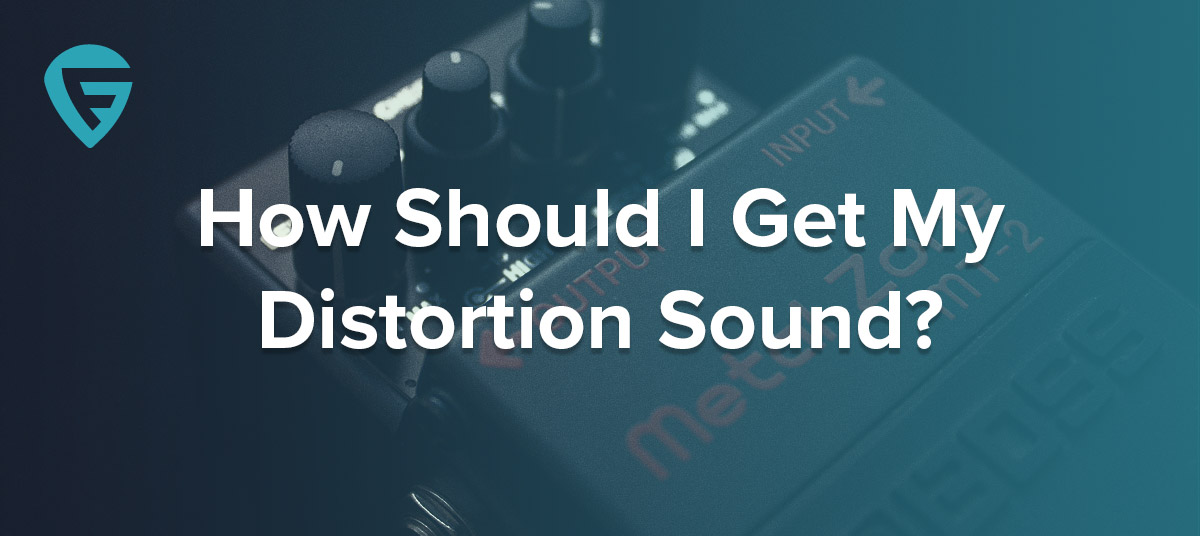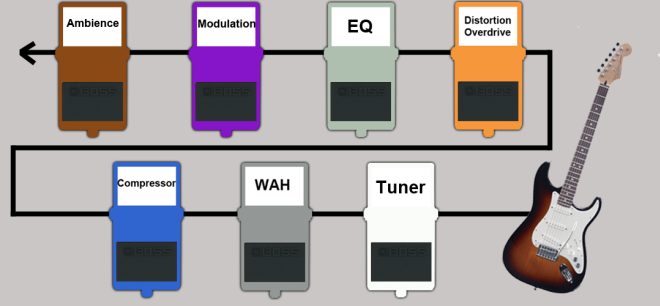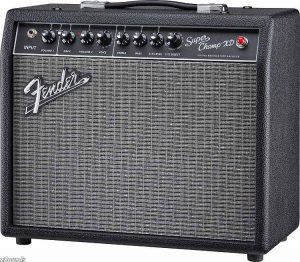- Home
- Instruments
- Gear
- Recording
- Lessons
- Reviews
- Blog

Love the questions that keep on coming down the pike. I have an easy answer for Palo from Bangor, Maine- Istanbul (your welcome). I’m going to choose the question randomly form the pile. Closing my eyes, here we go. And the winner is- How should I get my distortion sound?
Phew- there were some questions in the pile that I don’t know the answer to, but this I do. There are a couple of different ways to get your distortion sound. It really comes down to what you feel comfortable with. It also comes down to what kind of gear you have, or what you can get your hands on. It also comes down to what sounds good. Of all the sounds I think distortion is the most personal, and really drives what and how you play.
Pedals

Pedals are my favorite way of getting distortion. This has a lot to do with the fact that my first couple of amps were solid state, and they did not have the best distortion sound. I found the sound with a pedal was way better than what my amp was giving to me. It was also a matter of set and forget. Certain pedals did certain things well, and you just tapped their footswitch to put them into action.
Getting the right distortion pedal is hard though. You can listen to sound clips and watch YouTube videos all day, and you still won’t know what a pedal sounds like until you plug your guitar into it with your amp. I heard plenty of great pedals that sounded like complete rubbish when plugged into my rig. This is going to be a trial and error process. If you can try before you buy that would be the ideal way to find the right pedal.
Another piece in the puzzle is to find an amp that you like its clean sound. Set the amp for the cleanest you want your sound to be. Once you have your gain set at the ideal level, then add your distortion pedal.
Gain stacking is another advantage to going the pedal route. You can stack different distortion, overdrive, and fuzz pedals, to get different types of gain. A real good overdrive pedal can add a different tonal flavor to your distortion pedals, and give you more options for sounds.
 Amp
Amp
There is nothing quite as nice sounding as a tube amp with the gain cranked. There is a reason why these antiquated designs are still being made in this modern digital age. If you have a couple of different channels in your amp it will give you some great tonal options.
You could even run two or more amps set up differently to give you all your different tones. This can get complicated and not to mention heavy when having to move all those amps around. But there are amps that do the clean sound better, and different amps that do the distorted sound better. Using a combination of amps would give you the best of both worlds.
If you keep your rig to one amp with multiple channels this will keep your rig nice and simple. Simple is good when you have to move it around from practice to home to gig and back again. Fewer moving parts means fewer things that can go wrong at a gig.
One down side is if you like using other effects you’ll have to use an effects loop. Although there are guitarists who don’t bother and run all their effects in front of the amp whether it is gained through the roof or not.
Amp and Pedal
Combining pedals and amp distortion will give you plenty of tone to play with. An overdrive pedal can give your amp some different sonic character, while a boost pedal can push it into distortion bliss for soloing.
In many ways this gives you the best of both worlds. If you set up your pedalboard so that you can completely bypass it at times to get all your tone from your amp that would be awesome (note to self, get an A/B switch so I can try that). If you have a good sounding amp this would be a great way to really enjoy that sound.
Amp Modeling
I just want to take a moment to talk about amp modeling. There are some very good amp modelers out there that can simulate a treasure trove of amps. I always approached amp modelers as different sounding distortion pedals. I never believed that my amp really sounded like a Marshall or Orange amp, but rather I had a slightly different flavor of sound to play around with.
If you go the amp modeling route, make sure you have an amp that does not have much flavor of its own. Give the modeler a blank canvas to work from. I gave up on modeling when I found an amp that I loved the sound of, and I found the modeler getting in the way of that tone. I would also warn against getting a different amp tone for every song, which will become a nightmare of memorization and lots of tap dancing between songs to get the right patch loaded.
Volume
Another way to control your gain is to roll off the volume on the guitar. This will reduce the number of pedals at your feet or the number of channels you’ll need on your amp. It will pull back the distortion as you turn down, the disadvantage is that you will be turning down your guitar. But it is a beautifully simple and organic way to control your tone. I wish I had known about this technique when I was younger.
This works either with pedals or with amp distortion. I played with a guy who did this but with a volume pedal instead of with the volume on his guitar.
Try out these different techniques and see what works for you. Like I said earlier I use pedals for distortion, what do you use? Let me know and tell me about your favorite amp or pedal. Until next time turn up the gain and annoy the neighbors.

Reader Interactions